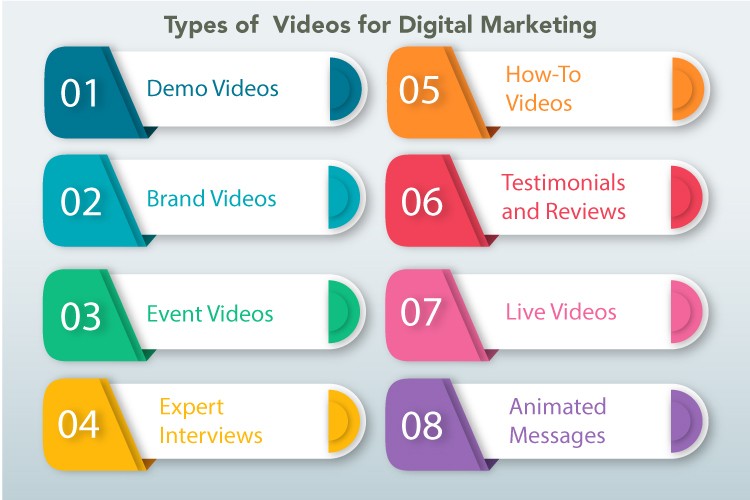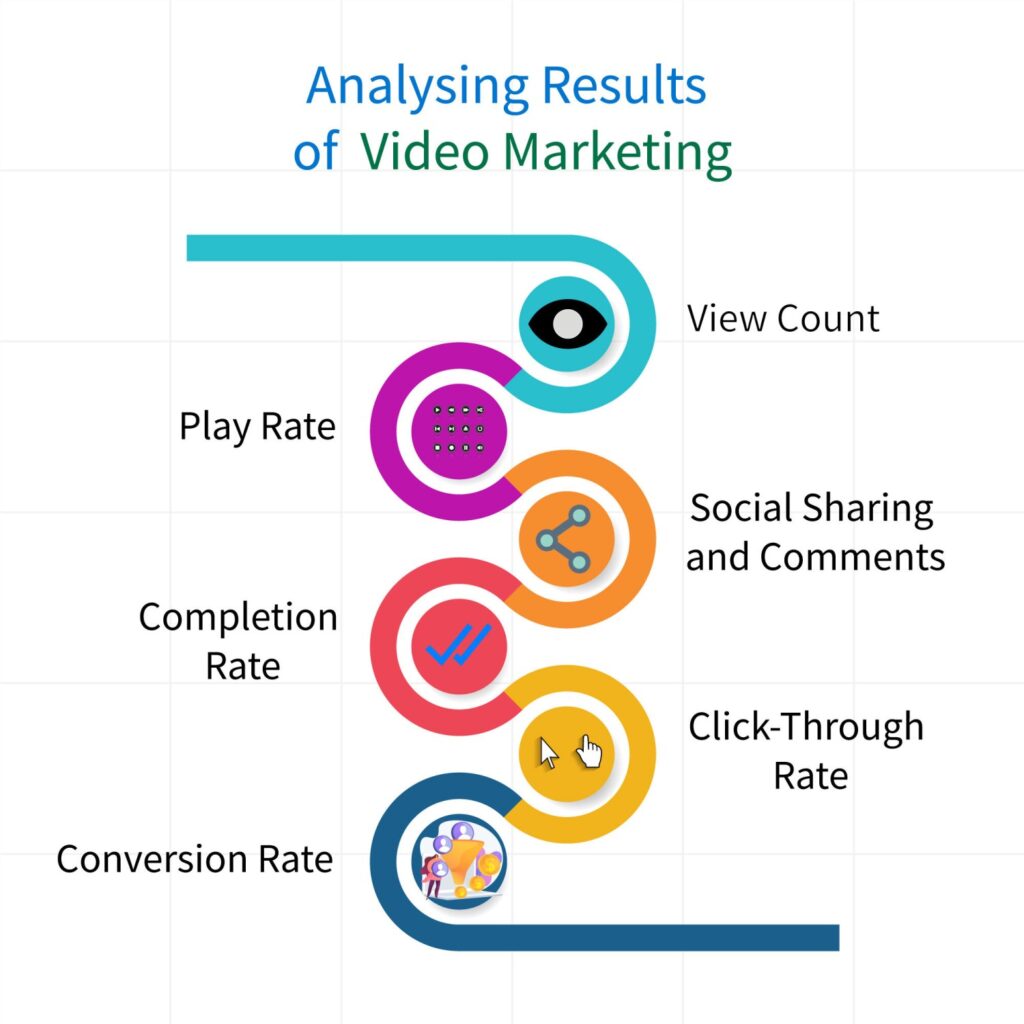


The Ultimate Guide to Video Marketing for 2022
Digital Marketing has been an essential part of businesses of modern days. Companies have used this platform in different ways to sell their products and services. Video marketing is one of the few ways that people have used to engage their audience. The idea of using videos might not be a newer thing, however, its importance has changed over the years.
Video is no longer just one piece of the overall marketing plan. It’s central to the outreach and campaign efforts, especially for social media strategies. The appeal of social media video is straightforward: Seeing a person’s face and hearing them speak is meaningful in a world when we are constantly inundated by the digital signal that feels so far away and impersonal. It gives us a sense of being up close and personal, and it also imparts sincerity to a message. All of this adds up to more trust.
On average, over 25% of individuals using the internet view online videos, with 65% watching almost ¾ of videos available online. When people see a video, they retain 95% of the material, compared to only 10% when they read online. Over a billion people use YouTube. This accounts for over a third of all Internet users. YouTube is trending as the second-largest search engine on the internet. Video production is getting more cost-effective than ever — one can shoot in high-quality, 4K video with a smartphone. Regardless, from camera equipment to lighting to editing software, the topic of video marketing can still seem pretty complicated. That’s why we compiled this guide, to help you squeeze the full potential of Video Marketing.
What are the Types of Videos for Marketing?
Before you start filming the video, it is important to establish the flow, style and purpose of the video. It is essential to decide the messaging and the motive behind the visuals. Segmenting the audience and analysing marketing goals is also a key factor in establishing the type of video needed.
Your video marketing goals could include; Increasing Your Brand Awareness, Generation of leads, Promoting a certain deal of offer, Announcing new information, Launch a new product or service, More social interaction and Boosting sales. Choose one primary aim to focus on per video for the best outcomes. This allows you to plan the correct video material and focus, resulting in greater results.
- Demo Videos
Demo videos showcase how your product or service works. Whether it is taking through someone a physical product, explaining the features or showcasing somebody using the said product or service. These videos help consumers understand the product better. Brand Videos Story videos are ideal for announcing new products and providing real-time updates. Due to the ephemeral nature of video stories, people are more likely to check them out immediately because they may not have another opportunity to do so later.
- Event Videos
Putting forward the experience of an event taking place within the company or outside is always a great way to attract people. Product launches, conferences, fundraisers etc., generate a lot of traffic when uploaded as videos. Produce a highlight reel or release interesting interviews and presentations from the gathering.
- Expert Interviews
Turn the camera around and conduct an interview with someone, whether it’s an industry thought leader, a member of your team, or even a customer or partner. Interview videos can help you establish credibility and thought leadership. They provide viewers with a deeper understanding of your company and products.
- How-To Videos
Tutorial videos are extremely beneficial, but they don’t always require a large budget to be successful. You can create short yet engaging how-tos that provide answers and insight to your viewers. Simply lay out the steps and then demonstrate how to complete them. Make it simple to understand and include a strong call to action.
- Testimonials and Reviews
Look to your consumers for video testimonials and reviews. Because testimonials are so persuasive to potential purchasers, they are an extremely necessary aspect of the sales process. When viewers see actual individuals who believe in your brand and utilize your items, they are more likely to believe in their quality and use.
- Live Videos
Going live is a new way to interact with your audience. Give a behind-the-scenes feel to your audience. It also draws longer streams and higher engagement rates — viewers spend up to 8.1x longer with live video than with video-on-demand. Live-stream interviews, presentations, and events, and encourage viewers to comment with questions.
- Animated Messages
Animated films are a great way to tell a tale, explain something, display an infographic, and more. It’s a fun and humorous approach to provide information to your audience. To attract viewers and captivate their attention, all you need are some imaginative graphics and narration.
- Plan your video
Before you shoot the video, it is vital to plan all aspects of the same to cut down pauses in between the process. Having a clear idea of what the video should look like, what is the target audience, what is the goal of the video, when it goes live and more questions can help you determine the look and feel of your video before you shoot it.
- Script your video
Scripting the video before shooting is also important. There’s a time and place for videos to be off-the-cuff and completely unscripted like tear-jerking documentaries, vlogging rants, or behind the scenes. That being said, most business videos need a script. Start writing your script the way you would begin a blog post, with an outline. List out your key points and order them logically.
- Set up for the video
Once the plan and script are ready, you can start the shoot. As a lot of time was spent on the planning and scripting process, the overall aesthetic is already pretty clear. The next step is to prepare your shooting space, prepare the talent (if in the video) and finally shoot the video. A tip here can be, shoot the video in the sequence of the script, so it’s easy to organise.
- Edit your video
Editing usually sounds like the most difficult part of making a video. However, with current technological advances, it has become a lot easier. If you are creating a video for social media, some editing options can be found in-app as well. If the shots are taken in sequence, the process will be even easier.
- Choose your music
Music is a powerful tool that can alter your video’s mood and tone. While it’s important to concentrate on video footage, don’t forget to factor music into the overall plan. Choosing the right music often makes the difference between an amateur project and a professional piece of content. When used properly, it can help keep your viewer’s attention, evoke emotions, and define your overall editing style.
- Record your voice over
A voice-over is a separate video narration that’s not spoken by the speaker on-camera. Voiceovers are an effective tool that can help make your content more relatable, emotional, and fluid. It’s important to remember that video audio is just as important as video visuals, in interacting with the audience.
- View Count
The metric showcasing how many times a video was played comes under the view count. This metric is great to track if your goal is to increase brand awareness and have your content seen by as many people as possible. However, it is important to keep the platform policy in mind, as for different platforms, the criterion of a view is different
- Play Rate
Play rate is the percentage of people who played your video divided by the number of impressions it received. This metric helps determine how relevant or appealing your video is to your audience. This can help you identify problems with your video, as if a lot of playing it but impressions are low, meaning the video is not up to the mark.
- Social Sharing and Comments
Conversations on social media happen using shares and comments. Moreover, the number of interactions means that the video is engaging the audience. Social shares are also important because the more times your video is shared, the more it’ll be viewed. If your goal is to reach a lot of people, the social share is a good metric to track.
- Completion Rate
The number of people who completed your video divided by the number of people who played it is the completion rate. This and other engagement metrics are a great way to analyse a viewer’s reaction to your video. A low completion rate might be a sign that your video content is not resonating with your target audience.
- Click-Through Rate
Click-through rate (CTR) is the number of times your call-to-action (CTA) is clicked divided by the number of times it’s viewed. CTR is a great indicator of how effective your video is at encouraging people to take your desired action. If your CTR is low, consider revising the design or copy of your CTA.
- Conversion Rate
Conversion rate is the number of times visitors completed your desired action divided by the number of clicks on your CTA. If your goal is to have your viewers complete an action like signing up for a free trial, try adding a video to your landing page to see if your conversion rate increases.



What is the Process of Making a Video?
Once the type of video is finalised, next comes creating video. With advanced technology, the steps are much easier than they were before. Preparation, shoot and editing can all be done on phones. However, it is still vital to plan out the video and go through the process to create video smoothly and efficiently, with clear goals.



How to Analyse Results of Video Marketing?
Video marketing is a subset of the digital marketing world. The main idea for both is to generate an active consumer base and brand awareness. The biggest advantage of digital marketing is the flexibility to review and modify the campaign as per the situation. Though videos used for marketing can be edited, once published. The analytical insights can provide a deep study of how the next campaigns can be improved. Here are a few ways that can be used to evaluate and analyse the video content.
In-house vs. Video Agency: How to Represent & Create?
Once you are ready with your key points and behind behind-the-scenes planning, preparation, and planning it’s time for real action.
Decide which videos require expert assistance and which videos can be completed in-house.
Working with a professional video agency studio may help you bring your idea to life by producing a high-quality product that complements your brand’s image. Video agency companies can also assist you to come up with new ideas and think outside the box. Search for the top 10 video marketing agencies near me over the internet and hire the relevant ones. Based on their previous work, evaluate the video agency in terms of what you want to achieve.
Working with a team, whether in-house or through an agency, makes creating excellent videos much easier. Everyone should be assigned a certain task.
As technology advances and more immersive equipment becomes available, video marketing will become even more participatory. You will be more prepared and effective in engaging leads and keeping your customers engaged in your business if you focus on future trends and produce videos that your market wants to watch.
Great video content isn’t enough to establish your brand and increase revenue. Before you start developing and marketing your video content, you need to have a solid video marketing strategy in place.
The plan we just outlined provides you with a detailed roadmap to follow. Now it’s time to put your ideas into high-quality, impactful video content. If you need any kind of assistance, you can contact us without any second thought! We are always there for you!





